Our guided tours provide a fascinating insight into the history, landscapes and everyday life on Madeira. Our Porto Moniz tour takes you to the spectacular seacliffs on the north-western coast.
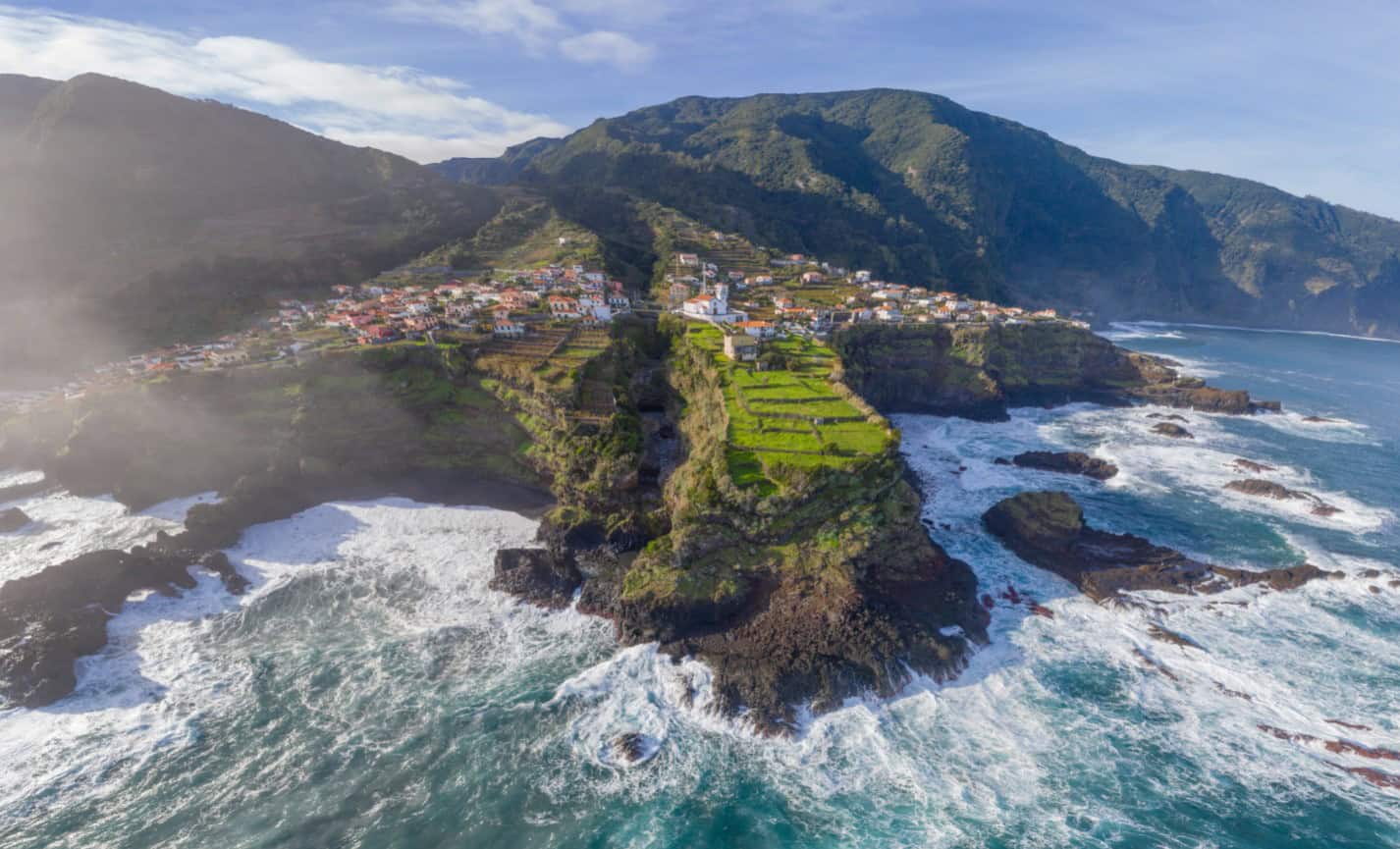
Your first stop of the day is the south coast town of Camara de Lobos – home to some of the island’s largest banana plantations and vineyards.
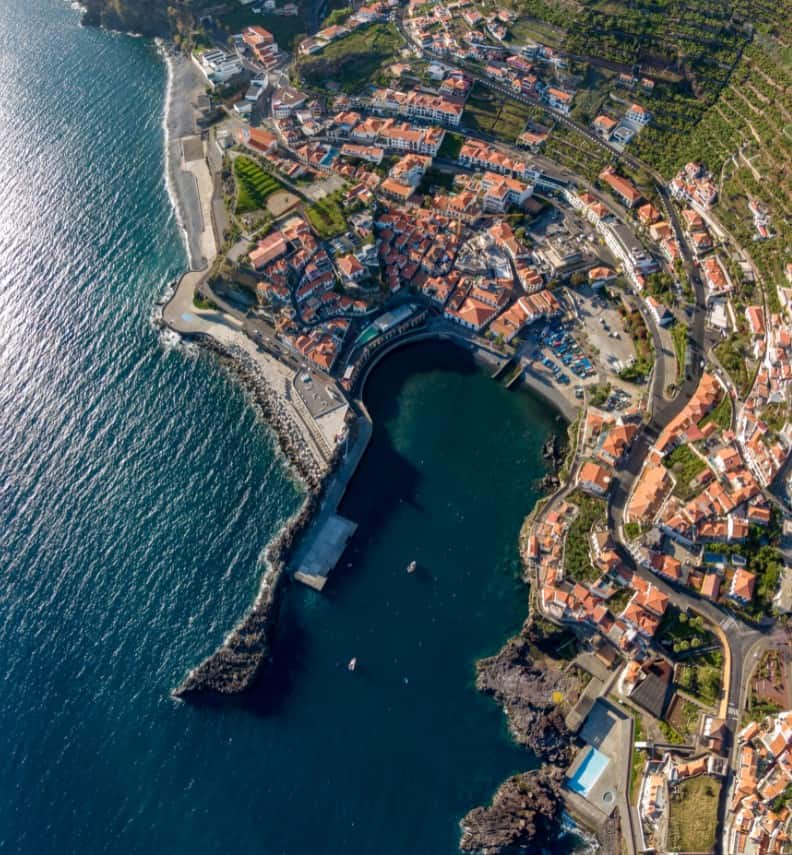
The name Lobos comes from Lobos-Marinhos: sea-lions – as the first settlers explored the south coast of the island, they discovered the bay was home to a large colony of Mediterranean monk seals. Colonisation drove the seals away from the main island to the neighbouring Desertas Islands, where their colony is now protected. It’s estimated that fewer than 700 monk seals survive in the world, mainly in the Aegean and the Mediterraean itself, with around 30 individuals here on Deserta Grande.
Winston Churchill visited Camara de Lobos during a stay on the island in 1950 – setting up his canvas and easel on the eastern side of the bay, before spending the day painting. The viewpoint was subsequently named ‘Miradouro de Winston Churchill’ and a commemorative plaque was added in 1981.

You’ll also visit a much more modern miradouro at Cabo Girao; one of Europe’s highest sea cliffs. A glass skywalk was constructed in 2012, and extends out over the cliff above the 580m sheer drop – it’s not a walk for the fainthearted.
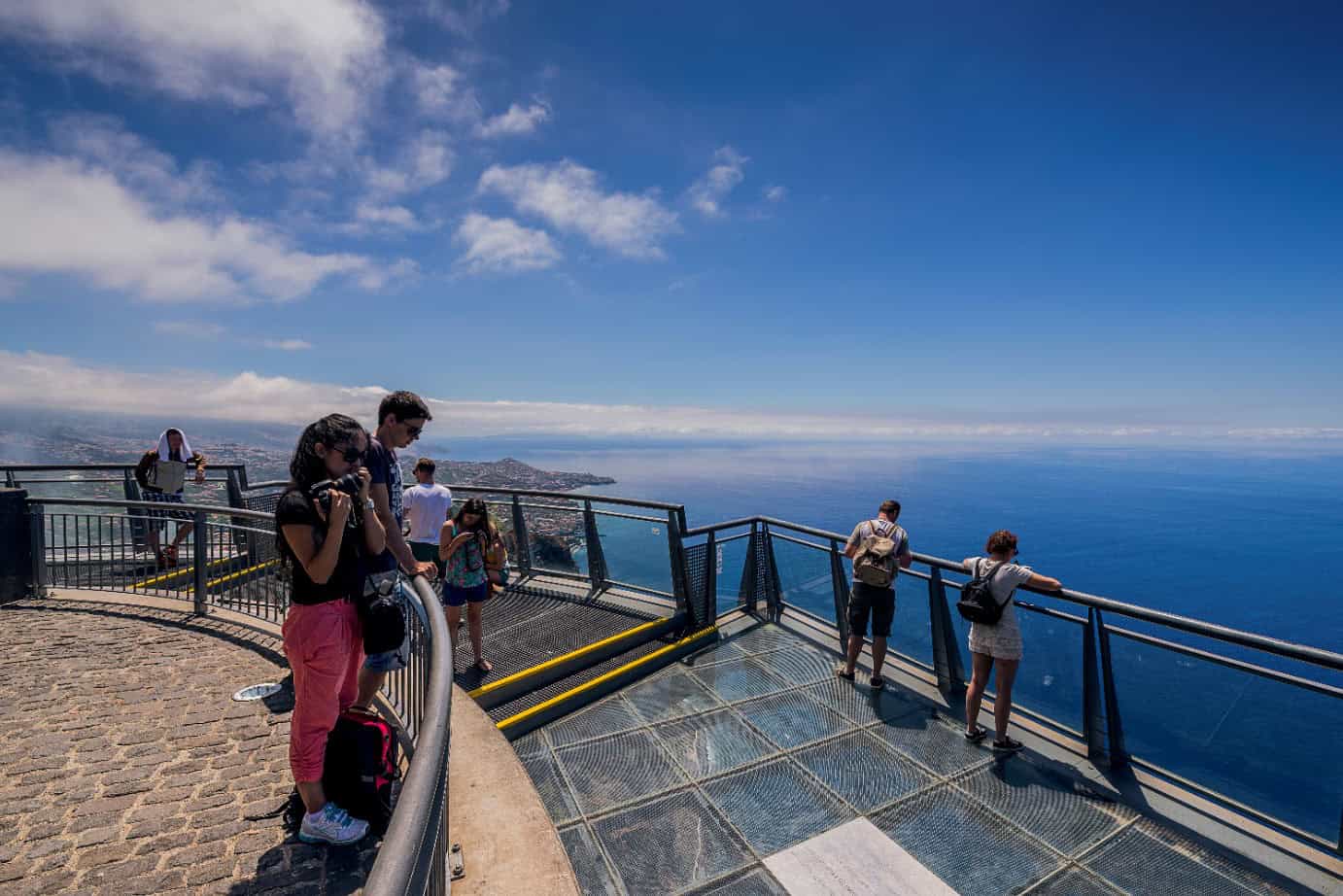
Heading inland, you’ll climb up onto the high Paul de Serra plain. At 1500m it can be quite a desolate part of the island – when the cloud and mist drop, it often feels like you’ve been transported to the highlands of Scotland. This high plain was once considered as a location for Madeira’s airport – however, the serra is prone to flash-flooding in the winter and the airports current location down on the south coast won out.
Following the long, straight road across the serra, you’ll eventually reach the north coast village of Porto Moniz – a good spot for lunch and one of the best swimming spots on the island. The coastline is dotted with natural rock pools, and there are changing facilities at the Complexo Balnear de Porto Moniz.
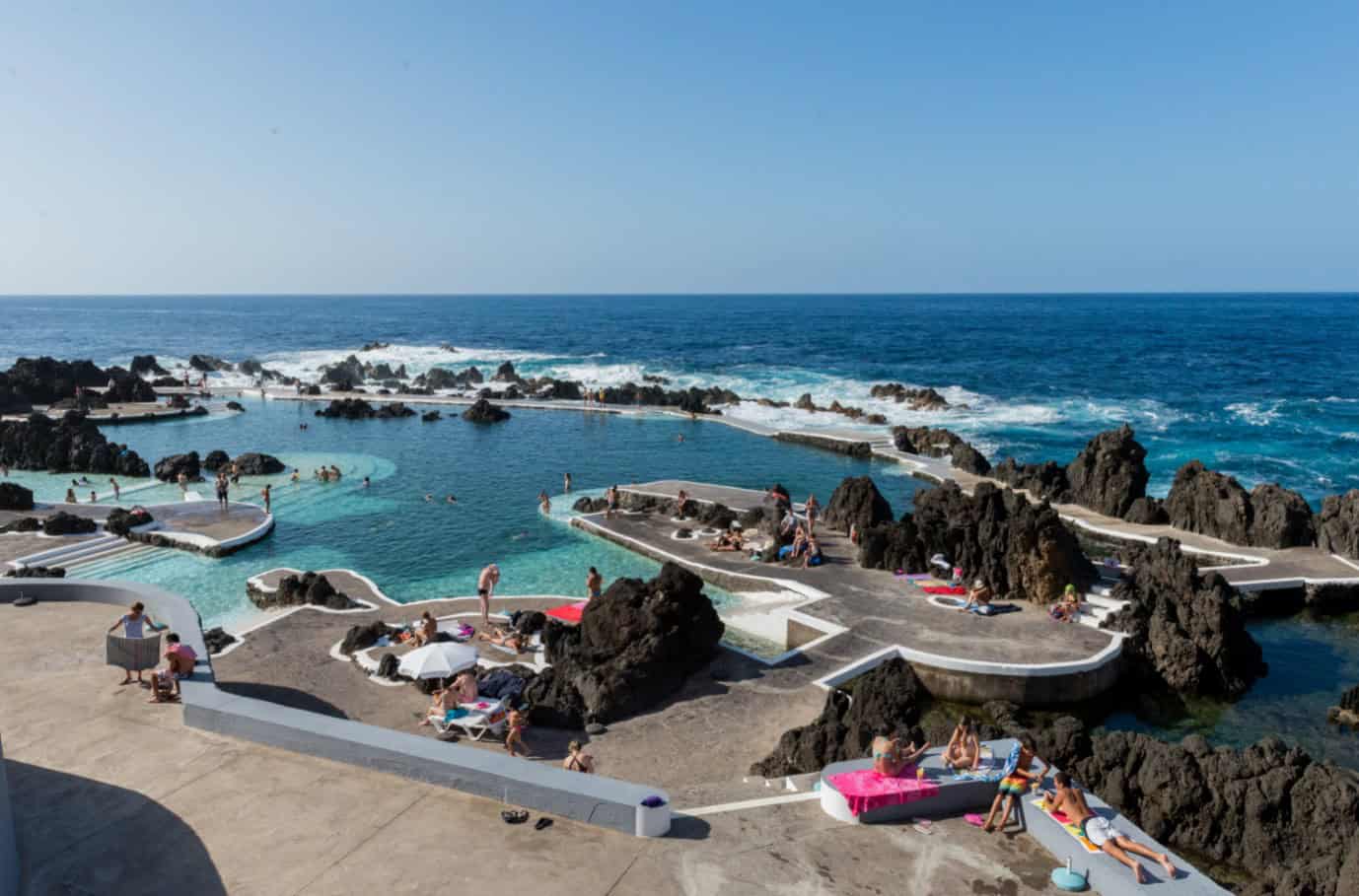
After lunch, you’ll pick-up the road along the north-coast – it’s one of our favourite drives on the island, where the road is squeezed hard between sea and land.
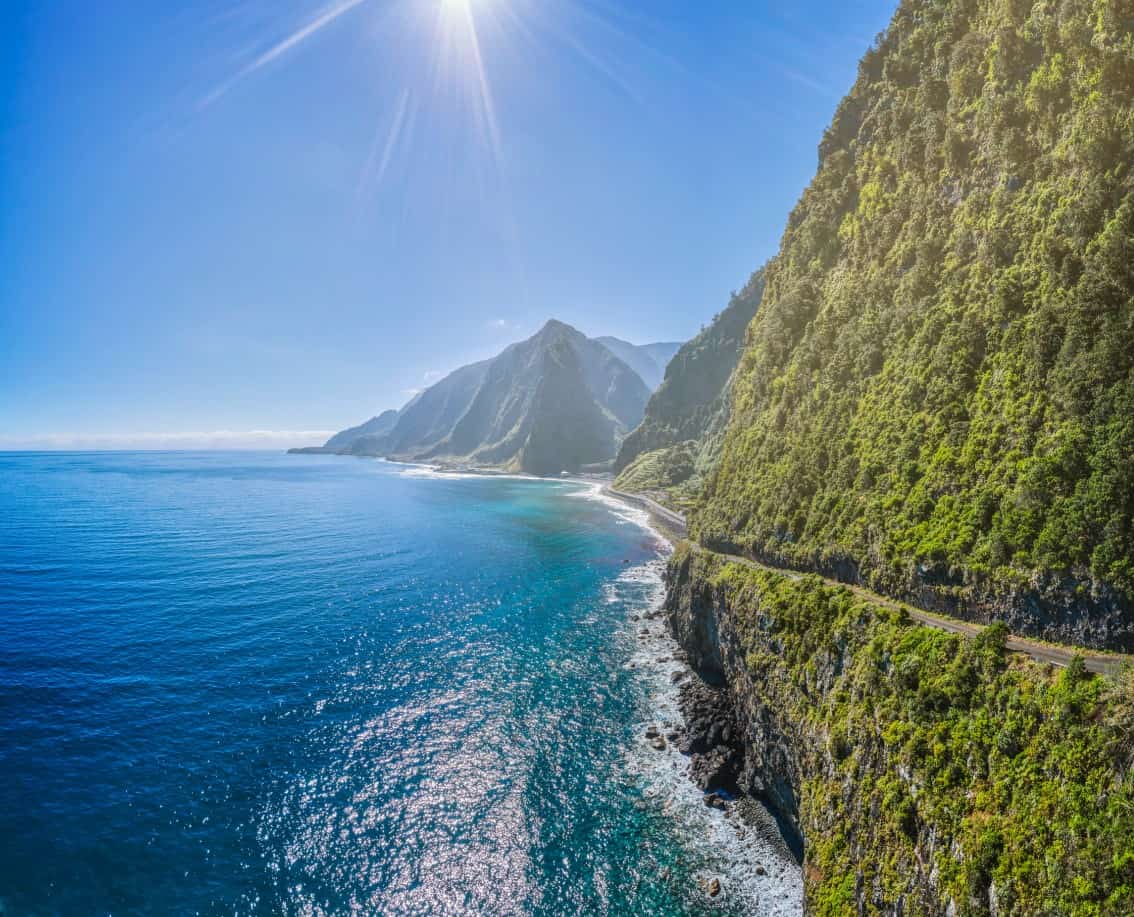
The road brings you to the coastal hamlet of Seixal and the famous Casacata Veu da Noiva: the Bridal Veil waterfall, formed by the Ribeira de Joao Delgada falling 30m from the slopes of the Achada do Cedro into the sea.

Turning inland, your next stop is the village of Sao Vicente, which sits in a narrow valley beneath the high peaks of the central mountains.
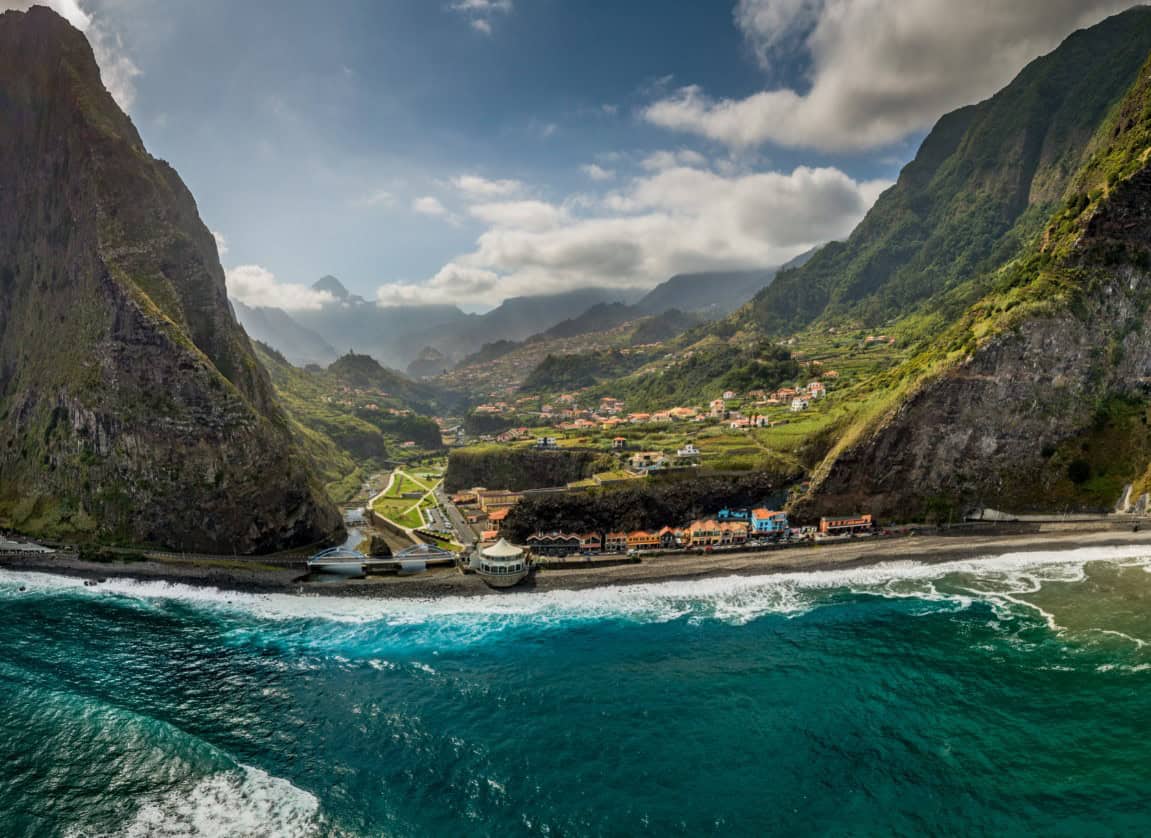
Sao Vicente is home to the island’s Volcanism Centre where you can explore 800,000-year-old lava caves and tunnels. The centre also has some interesting and unusual audio-visual displays that recreate the geological evolution of the island.
You’ll end your day with a drive up and over the spectacular high pass which dissects the island in two: from Sao Vicente up to the summits of Pico do Cedro and Pico da Encumeada, before dropping down toward Ribeira Brava on the south coast and home.
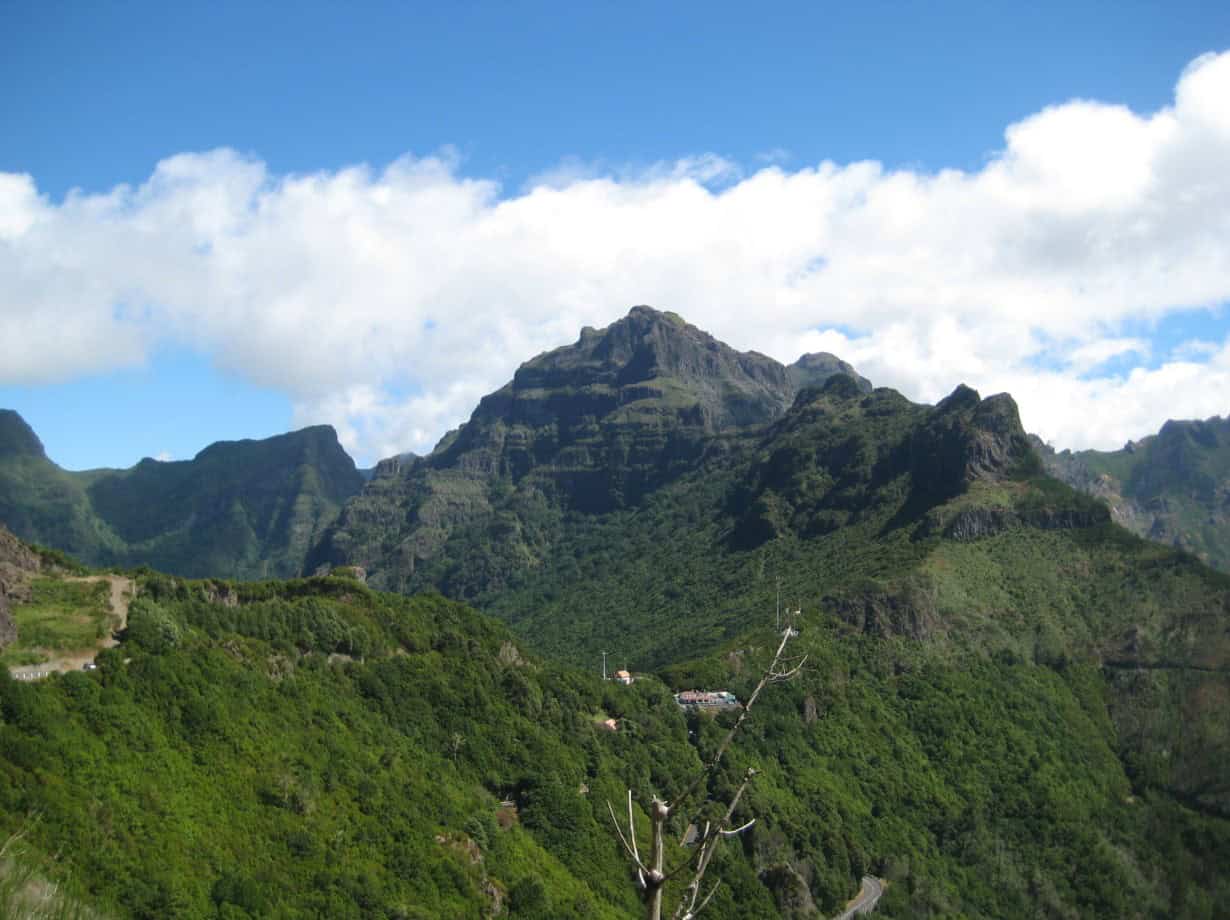








Follow us online